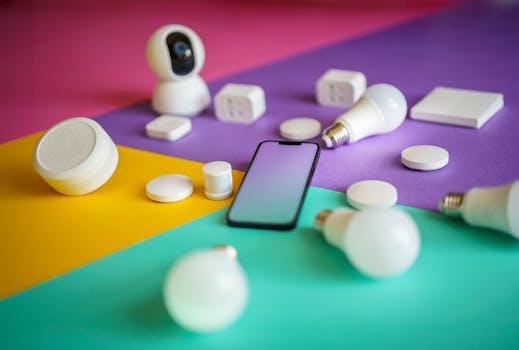
Smart Connectivity: The Role of IoT in Modern Communication. The Internet of Things (IoT) has become a vital component of modern communication, enabling smart connectivity and transforming the way we interact with devices and each other. With the increasing number of connected devices, IoT has opened up new avenues for communication, making it faster, more efficient, and more convenient.
The concept of IoT revolves around the idea of connecting physical devices, vehicles, and other items to the internet, allowing them to collect and exchange data. This has led to the development of smart homes, cities, and industries, where devices can communicate with each other and with humans, creating a more seamless and integrated experience. In the context of modern communication, IoT has enabled the creation of smart connectivity platforms that facilitate communication between devices, people, and systems.
One of the key applications of IoT in modern communication is in the development of smart homes. With the help of IoT devices such as smart thermostats, lights, and security cameras, homeowners can control and monitor their homes remotely, creating a more convenient and comfortable living experience. For instance, smart thermostats can learn a homeowner’s schedule and preferences, adjusting the temperature accordingly, while smart lights can be turned on and off remotely, providing an added layer of security.
Another significant application of IoT in modern communication is in the industrial sector. IoT has enabled the development of smart factories, where machines and devices can communicate with each other, optimizing production processes and improving efficiency. For example, IoT sensors can monitor equipment performance, detecting potential issues before they occur, and enabling predictive maintenance. This has led to significant cost savings and improved productivity, making industries more competitive and sustainable.
In addition to smart homes and industries, IoT has also transformed the way we communicate on-the-go. With the help of wearable devices such as smartwatches and fitness trackers, people can stay connected with their friends, family, and colleagues, while also monitoring their health and fitness. For instance, smartwatches can receive notifications, track fitness goals, and provide navigation, making it easier to stay connected and organized.
Furthermore, IoT has enabled the development of smart cities, where urban planning and management are optimized through the use of connected devices and data analytics. For example, smart traffic management systems can monitor traffic flow, adjusting traffic lights and optimizing traffic routing, reducing congestion and improving air quality. This has led to improved quality of life, reduced traffic congestion, and enhanced public safety.
In the context of WordPress, IoT has opened up new opportunities for developers and users alike. With the help of IoT plugins and themes, developers can create smart connectivity platforms that integrate with various devices and systems, enabling seamless communication and control. For instance, WordPress users can control their smart home devices, monitor their industrial equipment, or track their fitness goals, all from within their WordPress dashboard.
However, as with any technology, there are also challenges associated with IoT in modern communication. One of the primary concerns is security, as connected devices can be vulnerable to hacking and data breaches. Therefore, it is essential to implement robust security measures, such as encryption and secure authentication, to protect devices and data. Additionally, there is a need for standardization and interoperability, as different devices and systems may use different protocols and communication standards, creating integration challenges.
Despite these challenges, the future of IoT in modern communication looks promising. As the number of connected devices continues to grow, we can expect to see more innovative applications of IoT in various sectors, from smart homes and industries to transportation and healthcare. With the help of IoT, we can create more efficient, sustainable, and connected communities, transforming the way we live, work, and interact with each other.
In conclusion, Smart Connectivity: The Role of IoT in Modern Communication is a rapidly evolving field, with significant potential for growth and innovation. As we continue to develop and deploy IoT technologies, we must prioritize security, standardization, and interoperability, to ensure that the benefits of IoT are realized and that the challenges are addressed. With the help of IoT, we can create a more connected, efficient, and sustainable world, where communication is faster, more convenient, and more enjoyable.


